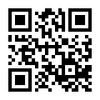文章基本信息
- 标题:隠匿情報検査の妥当性:記憶検出技法としての正確性の実験的検証
- 本地全文:下载
- 作者:小川 時洋 ; 松田 いづみ ; 常岡 充子 等
- 期刊名称:日本法科学技術学会誌
- 印刷版ISSN:1880-1323
- 电子版ISSN:1881-4689
- 出版年度:2013
- 卷号:18
- 期号:1
- 页码:35-44
- DOI:10.3408/jafst.18.35
- 出版社:Japanese Association of Forensic Science and Technology
- 摘要:
Currently, polygraph examinations in Japan use the concealed information test (CIT) to determine whether a suspect knows specific details of a crime. The present study examined the accuracy of the CIT as a memory detection technique in a mock-theft experiment. Participants were randomly assigned to either an encoding or non-encoding group. An expert polygrapher who was not informed of the group assignments, conducted a CIT that consisted of two questions. One inquired about a card number chosen by the participant, and the other regarded an item that had been stolen. Analyses focused on the second question. Roughly 20% of cases were judged inconclusive while sensitivity and specificity for the remaining cases were 86% and 95%, respectively. Analysis was repeated using modified Lykken scoring, and rates of inconclusive cases, sensitivity, and specificity by this method were 25%, 83%, and 91%, respectively.

